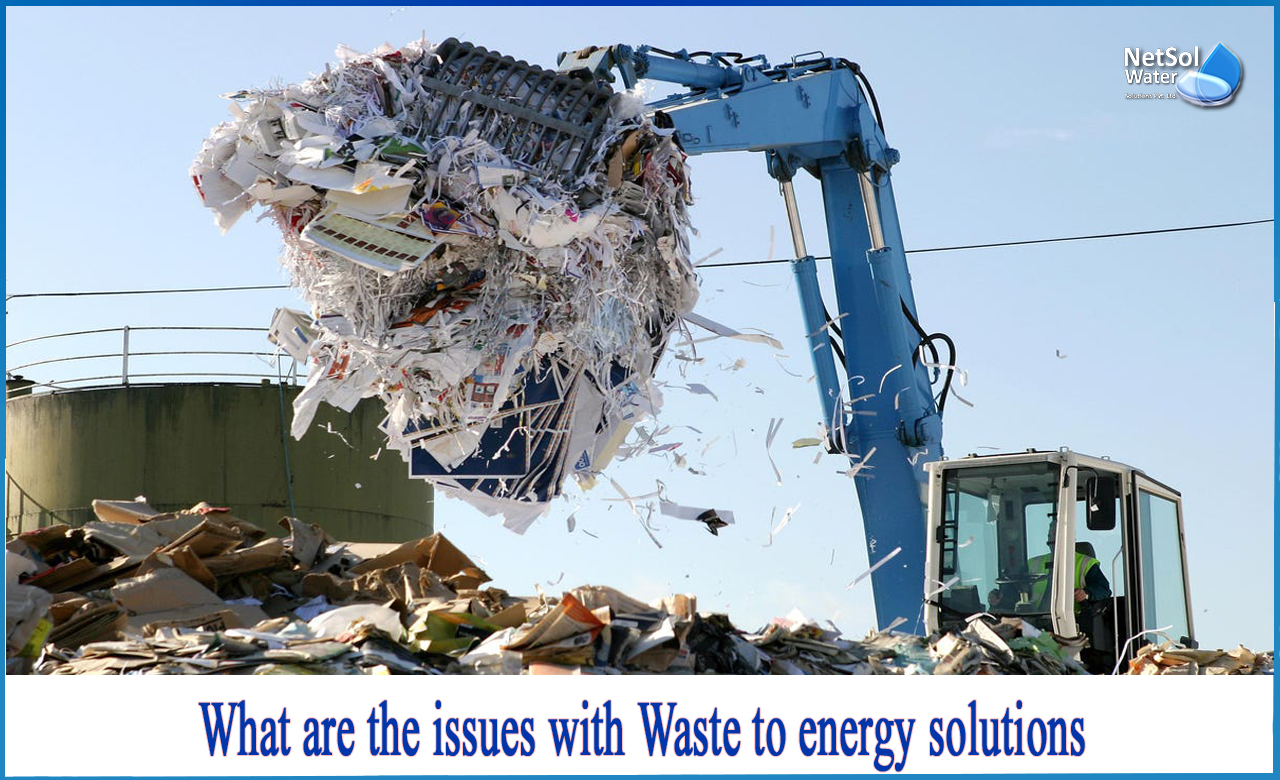What are Waste-to-Energy Solutions?
Waste-to-energy (WTE), sometimes known as energy-from-waste, is the process of producing energy (usually heat and electricity) from waste. This is frequently accomplished by direct combustion utilizing waste incinerators – that is, by burning the waste or by producing a combustible fuel from a gas such as methane. The second is less prevalent and necessitates techniques like gasification or anaerobic digestion.
Incineration is the most widespread sort of waste-to-energy technology. Waste is burnt, which boils water, converting it to steam and rotating turbines, which generates energy.
Where is WTE useful?
I. Areas where a waste management and collecting system is in place;
II. Consistent supply of solid waste when treatment prices rise due to scarcity;
III. Regions with high energy demand/price to account for the expense of waste recovery.
What are the issues with Waste to energy solutions?
There are two common disposal alternatives for non-diverted waste: landfill and incineration. However, as people seek cleaner energy and more environmentally friendly waste management, the drawbacks of waste-to-energy are now counted.
This includes the pollution and particles it produces, the destruction of usable materials and the potential to deter more sustainable waste management and renewable energy sources.
Excessive CO2 emissions
Almost all of the carbon content of waste burnt for WTE is released as carbon dioxide, one of the most significant greenhouse gases.However, if the waste-fuel is biomass – that is, derived from natural sources such as food waste, paper and paper board, wood, and natural fabrics such as cotton – the CO2 it contains is originally extracted from the atmosphere. Plastics and other oil-based goods, on the other hand, which are also burnt in WTE, are equal to any other fossil fuel and create harmful greenhouse gas emissions.
Possibility of destroying recoverable materials
While waste-to-energy allows for the recovery of some resources, such as metals, it tends to destroy significantly more. WTE incineration is most typically accomplished by a method known as "mass-burn," in which MSW is burnt in bulk rather than segregated.As a result, the process can damage resources that could otherwise be recovered, such as minerals, wood, polymers and others.
WTE might make recycling less appealing
Another disadvantage of waste-to-energy is that it may dis-incentivize recycling or other more sustainable waste management practices. People, businesses, and Governments are less likely to participate with or invest in more beneficial solutions, such as reduction, reuse, or recycling, if they believe waste-to-energy is a feasible sustainable energy source and waste management approach.
WTE iscost-competitive
These are cost-competitive as well as achieve environmental objectives. If external private financing is required for a WTE facility, the cost of credit must be competitive and the project must be ‘bankable’ because the equipment’s are highly specialized with potentially low value as security and the WTE market is relatively new and these projects may attract a higher risk profile and funding cost.
Design of WTE is not accessible to flexibility in feedstock volume and composition
The composition of waste feedstock may vary over time, which may be affected by changing consumption patterns or Government policy to divert certain materials from landfills. Therefore, WTE facilities need to be designed to allow for some flexibility in feedstock volume and composition.
Choose the best company for your waste management!
Talk to one of our advisers at Netsol Water to discover more about waste management practices and how your company can go greener. Contact us at +91-9650608473 or drop a mail at enquiry@netsolwater.com to remain up to date regarding the latest techniques to enhance your business's waste management.



